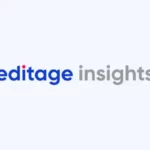From ‘Brain drain’ to ‘Brain circulation’: Global trends in international collaboration and researcher mobility

The landscape of scientific research and publishing is fast changing. Scientific research is becoming increasingly global, and is no longer dominated only by the three science superpowers USA, Europe, and Japan. With China, Singapore, India, Brazil, South Africa, and the Middle Eastern countries increasing their R&D expenditure, new global scientific powers are emerging. With technology bringing the world closer, scientists are collaborating with each other internationally, and are showing a readiness to relocate to a different country, motivated by their desire to get the best of facilities, with an excellent team of scientists, and an environment of shared knowledge. The concepts of knowledge sharing, collaboration, research networks, and researcher mobility are gaining more importance than ever before. Therefore, to get a clear picture of the changing face of global science, we need to understand the changing patterns in collaboration and researcher mobility.
Collaborations are leading to hyperauthorship
According to a recently published report by The International Association of Scientific, Technical and Medical Publishers (STM), collaboration is a definitive trend, with international collaboration, co-authorship, and multi-author papers seeing a steady growth over the last few decades. In the recent years, the average number of authors per article increased from 3.8 in 2007 to 4.5 in 2011. Today, more than two-thirds of all research articles are co-authored. A more recent trend in collaborative research is hyperauthorship: papers with a large number of authors, sometimes even more than 1000, with the recent record-breaking 5000 author-paper on the Higgs boson published in Nature. If multi-author papers are taken as a parameter for measuring collaboration, the growth has been enormous. As per the STM report, the highest number of authors on a paper indexed by ISI going up to 3791 in 2011 from 118 in 1981. International collaboration has also seen a steady growth: 15 years ago, 25% of all published articles were internationally collaborative; today, the figure has gone up to 35%. Internationally co-authored articles grew from 16% of the global output in 1997 to 25% in 2012.
Collaboration increases citations
There is a strong positive correlation between collaboration and citations, and papers with international collaborations receive a higher number of citations. The STM report mentions that the average number of citations received per article increases with each additional collaborating country, and articles with collaborators from 5 countries receive nearly three times as many citations as those with no international collaboration. Jonathan Adams, in his article Collaborations: the rise of research networks, says that this holds true even for collaboration at the institutional level; for instance, Harvard University gets a boost in citations from papers written in collaboration with the University of Cambridge. Papers with industrial collaboration also receive more citations; for example, when the University of Oxford collaborates with GlaxoSmithKline, the papers are cited roughly four times as often as the world average for their field.
Citations per article versus number of collaborating countries
Source: Royal Society Report, 2011
The rise of collaborative research networks
With the increase in multi-author papers, collaboration has become more extensive, creating research collaboration networks. Research collaboration networks work very much like social networking sites. If two scientists A and B collaborate on or co-author a paper, they are considered connected. By virtue of this connection, all the authors that Scientist A has collaborated with on other publications and those with whom Scientist B has collaborated form a network of scientists who cite each other’s works and find potential collaborators for their projects. With every collaborative or co-authored work, this network grows.
Many of the emerging collaborative networks are regional. Adams provides some interesting facts in his article:
- Almost every country in Europe collaborates with every other country in the region. UK and Germany are the most prolific collaborator countries in Europe, with around 10,000 joint publications in 2011.
- China’s collaboration ties with countries in the region have seen a stupendous increase since 1999: fourfold with Japan, eightfold with Taiwan, and tenfold with South Korea.
- India has an increasing research collaboration network with Japan, South Korea and Taiwan.
- The Middle East is also witnessing the growth of a regional collaborative network with Egypt and Saudi Arabia being the main players, and neighboring countries like Tunisia and Algeria gradually becoming a part of it.
- Latin America also has an emerging research network centered round Brazil, with Argentina, Chile and Mexico being the main collaborators.
- Africa has three distinct networks: one in southern Africa, the second in the French-speaking countries in West Africa and the third in the English-speaking nations in East Africa.
Thus, the concept of scientific superpowers is gradually giving way to a multipolar, global landscape for scientific research.
Collaboration boosts researcher mobility
How does the collaborative nature of science benefit the individual researcher? It provides access to funding, resources, opportunities to work in international teams, and increase in citations. These act as incentives for individual researchers to crisscross the globe to work on collaborative projects. Today, researchers are willing to migrate to other countries to have a fruitful research experience.
According to Elsevier’s latest report for the UK government, the mobility of scientists varies by region and by country. Most European researchers are mobile, and UK tops the list with almost 72% of active UK researchers, having published articles while affiliated with non-UK institutions. As per the STM report, the UK and Canada have the lowest proportion of “sedentary” researchers (who have not published outside their home country in the period 1996-2012) at 27%, compared to 60% in Japan, and 71% in China. The US is the top destination country for expatriate scientists across nations, and 38% of US scientists have a foreign origin. According to the GlobSci survey published in Nature, when it comes to the proportion of foreign scientists working in a particular region, Switzerland heads the list at 57%, followed by Canada (46.9%), and Australia (44.5%).
According to the survey, geographical location is sometimes a deciding factor for mobility patterns among scientists. For many countries, their “neighbors” are the main source of foreign talent: Germany is in most cases the source country for immigrants in the neighboring Netherlands, Belgium, Denmark, Sweden and Switzerland. Likewise, Brazil sources its foreign talent mostly from Argentina, Colombia, and Peru. The US is the country of origin of scientists working or studying in Canada. China and South Korea are the source countries for immigrant scientists in Japan. Language and cultural similarity also matter: the United Kingdom is the predominant source country for Australia and Canada, and Argentina is the major source country for Spain. However, these factors, though present in many countries, do not always dominate: the top country of origin for foreign scientists in the US is China; the major source countries for the UK are Germany and Italy.
Brain circulation: Bringing home the diaspora
Academics and institutions have experienced the benefits of collaboration and researcher mobility, and the earlier concept of “brain drain” has been replaced with the more fluid concept of “brain circulation,” where the home countries of emigrants also stand to benefit when expatriates return, equipped with the skill and knowledge gained in foreign countries.
However, how likely are scientists who have left their home countries in search of better research opportunities to return to their home? According to the GlobSci survey, migrant scientists from Sweden and Canada show the highest possibility of returning home, with one in three scientists saying they will return. With less than one in five scientists saying they will return, migrants from the UK, Italy, Denmark and Belgium are less likely to return. Indians working outside the country are the least likely to return among all the 16 countries surveyed. Job prospects are a deciding factor in the return of emigrant scientists from the Netherlands, Japan, Italy, Spain, France, Germany, and Switzerland.
Likelihood of return of migrant scientists to their home country, by country of origin
Source: GlobSci survey report, 2011
Some governments appreciate the value of ‘brain circulation’ and frame policies or allocate resources to attract national talent back home. The Chinese Government’s ‘The Thousand Talents Program,’ established in 2008, has been successful in bringing back many expatriate academics to China. Likewise, the Indian government has established the Ministry of Overseas Indians to frame policies relaxing citizenship requirements to favor the return of emigrants. Malaysia has set up a new ‘Talent Corporation’ to attract the diaspora communities. Ecuador has also announced a US$1.7 million ‘Prometheus Old Wiseman’ plan to attract senior scientists back to Ecuador.
The mobility of scientists and researchers, the increasingly collaborative nature of science, and the formation of research networks clearly indicate that research is transcending national and regional boundaries. Governments are viewing these developments in a more positive light and trying to frame policies around them to facilitate a two-way flow of knowledge, skills, and technology that will be beneficial to all. Going forward, the face of science might change, and national priorities might give way to global ones, hopefully, we believe, in the best interests of science and humanity.




